Faculty Research Equipment
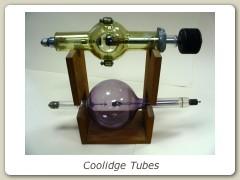
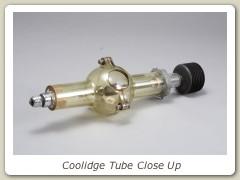
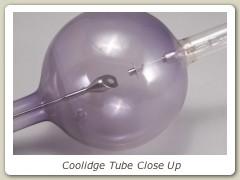
Coolidge tubes were used by Professor Robards in the 1930s to produce x-rays. Both tubes have tungsten filaments and tungsten targets. Note the cooling fins on the anode on the top tube. The purple color on the bottom tube is caused by radiation damage due to exposure to the x-rays. A tube like the one on the bottom was the workhorse of medical x-ray machines for about 20 years. Professor Robards used this tube mostly for service activities including taking pictures of the injuries of football players.
Gold Crucible
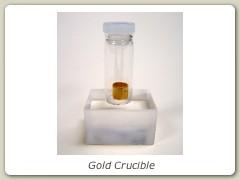
A gold crucible used in Professors Sheng and Hermann laboratory in the 1980’s. A crucible similar to this one was used by Professors Sheng and Hermann to synthesize the thallium-based high-temperature superconductor. In the race to discover a room-temperature superconductor, this type of superconductor with a critical temperature of 125K held the temperature record for about five years. Superconductors can transmit electricity with zero loss and can be used to levitate trains for high-speed travel (mag-lev trains).
Gov. Bill Clinton
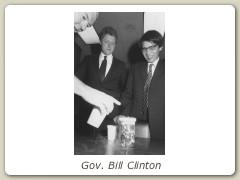
The photograph shows the then- governor Bill Clinton and Professor Sheng watching a levitated magnet. Professor Richard Anderson is demonstrating the levitation, and his hand and face are partially visible in the photograph.
Particle Trap
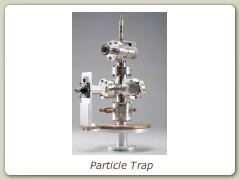
Professor Charles Richardson and his students used this apparatus during the 1980’s and 90’s to trap and levitate single, microscopic, solid and liquid particles for extended periods in order to study their optical and thermodynamic properties. The principle behind the trapping is the following: A charged particle in a periodic, inhomogeneous magnetic or electric field is pushed to a null point or line in the field. In high energy physics this Principle of Strong Focusing is used in the design of the large alternating-gradient-synchrotron accelerators to form the particle beam.
Tungsten Target
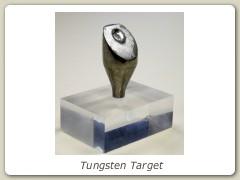
This is a Tungsten Target from an x-ray tube. This target (notice the spot where the target melted) was used by Franklin R. Wintker (BS 1931, the second person to receive a physics degree from the University) as a paperweight for a number of years. In 1995 he returned the target to the university.
X-Ray Diffractometer
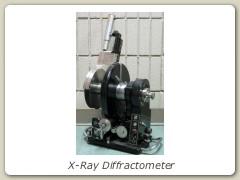
The X-Ray Diffractometer was used for structure analysis and identification of powdered samples for about 10 years starting in 1951 by Professor Sharrah and students. The instrument has motorized scanning, a Geiger tube detector, and was used in conjunction with a Philips X-Ray machine.
X-Ray Film
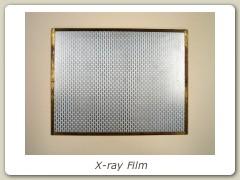
An unexposed X-Ray Film in its original metal casing.
X-Ray Tube
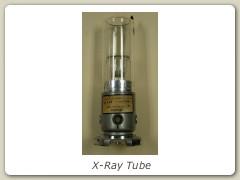
This x-ray Tube has a water-cooled Ag target (not visible). X-rays come out from four ports on the sides of the tube. This tube, and tubes similar to this one, were used in a Philips X-Ray machine by Professors Sharrah and Clayton of Physics and Professor Kruh of Chemistry. These types of tubes were used in this department for research for about 20 years starting in 1951.
Burner - Rose
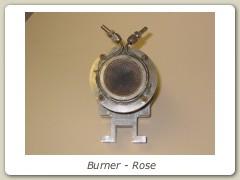
One of the burners used by Professor Gupta and his students in research on the application of photothermal spectroscopy to combustion diagnostics. This one is a homebuilt burner built by Allen Rose.
McKenna Burner
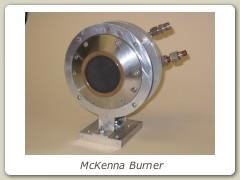
This is a commercial McKenna Burner which produces a flat, pancake-shaped, uniform flame.
Bausch and Lomb spectrometer
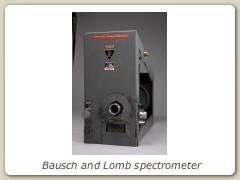
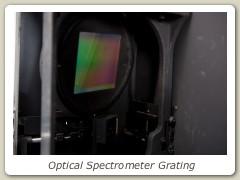
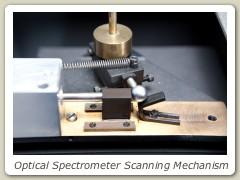
This spectrometer was used by Professor Raymond Hughes and his students for research in atomic physics in the 1950’s and 60’s. It uses a large area 1200grooves/mm reflection grating in Fastie-Ebert configuration.